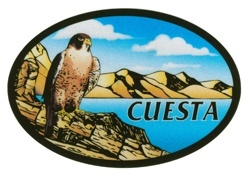Cuesta Conservation Camp #24
Cuesta Conservation Camp #24 is a 100-man institution-based firefighting camp located on property leased from the California National Guard at Camp San Luis Obispo. Cuesta is jointly operated by CDCR and the California Department of Forestry and Fire Protection (CAL FIRE). The camp’s primary mission is to provide incarcerated hand crews to fight fires all over the state. Fire crews also complete conservation and community service projects year-round.

Contact Information
Address
635 N. Santa Rosa Street, San Luis Obispo, CA 93405
Phone
(805) 547-7971
CDCR Camp Staff
- Lt. T. Eilers, Camp Commander
- Sgt. R. Schnore, Assistant Camp Commander
- Sgt. J. Reasner, Assistant Camp Commander
- Sgt. J. Folks, Assistant Camp Commander
- Sgt. A. Burks, Assistant Camp Commander
About Cuesta Conservation Camp #24
The camp was activated on May 1, 1962 as CAL FIRE’s 24th conservation camp. The camp is located approximately six miles west of San Luis Obispo on State Highway 1.
Cuesta trains its own incarcerated crew members to become competent firefighters. The camp’s training captain gives the 67-hour firefighter course. Incarcerated fire crew members learn to use mechanized power tools such as chain saws, weed whackers, and chippers. The local CAL FIRE Training Bureau often uses the Camp’s classroom as an additional training site.
Cuesta’s training captain coordinates the annual crew preparedness exercise for each fire crew at the camp. Camp personnel have a wide variety of areas for hiking, cutting, and felling. Areas of thick coastal brush provide excellent training for fire line construction and the elimination of diseased pines on State Parks property provides critical tree-falling practice.
Camp Projects
Hand crews also perform conservation and community service projects. Volunteers provide general cleanup and labor to public agencies needing more support, hazardous vegetation removal, trail maintenance, clearing and restoring flood channels, providing firewood to campgrounds, and labor services to the California National Guard.
CAL FIRE determines conservation projects.
- Morro Bay State Park – Pitch Canker has affected about 900 trees in the native Monterey pine forest and adjoining golf course. Crews remove infected trees and then burn or chip them.
- Montana de Oro State Park – Construction and maintenance of a large network of trails for safety and accessibility. Crews also clear branches and debris within the park’s large Eucalyptus Forest to keep it safe and healthy for visitors.
- Hearst Castle State Park – Reducing wildland fuels by maintaining fuel breaks and removing excess flammable vegetation through chipping and burning.
- Pismo Beach State Park – Removing hazardous trees and assisting with vegetation rehabilitation projects in the coastal dunes
- Fire Safe and Vegetation Management Projects – Constructing fuel breaks, removing hazardous vegetation, and performing controlled burns when appropriate.
- Repairing and re-roofing several buildings housing the state’s museum for the original Civilian Conservation Corps.
- Reconstruction of a mission-era Chumash Indian village on the grounds of the La Purisima Mission State Park and the canal system that served the original Mission.
- Oceano Dunes State Vehicular Recreational Area: Installing an ADA-accessible boardwalk.
- Point San Luis Lighthouse: Site improvements increasing safety and accessibility.
- Construction of hiking and biking trails within the cities of San Luis Obispo and Pismo Beach.
- Morro Bay Natural History Museum: Grounds maintenance and cleanup
- Oceano Dunes State Park: Restoration and replanting of native vegetation in the
Cuesta’s dedicated in-camp project is its silkscreen print shop. The camp is one of two in the state that produces all of the wildland safety gear for state firefighters.
Programs and Services
Just as in every CDCR prison, every conservation camp offers rehabilitative and educational services, including substance abuse programs such as Alcoholics/Narcotics Anonymous (AA/NA), religious programs, and GED and college courses. Their efforts during emergencies build a strong work ethic and a feeling of self-worth. As a result, these activities prepare the camp participants for a successful integration back into their communities upon release.
For more stories featuring current and former Conservation (Fire) Camp Program participants, read Inside CDCR.
Visiting can be a critical part of an incarcerated person’s rehabilitation. For more information, visit the Scheduling Visits at Conservation (Fire) Camps page.